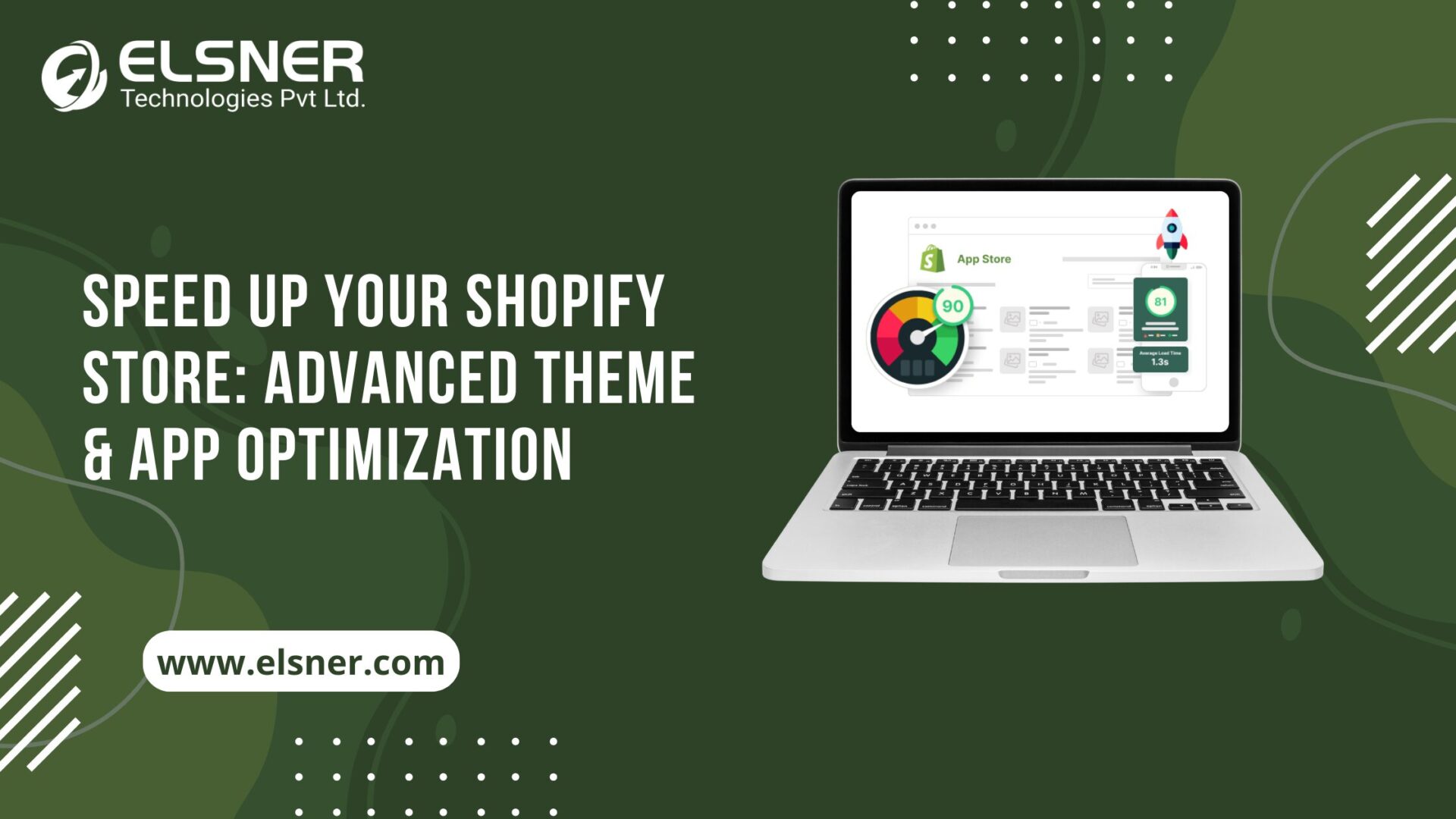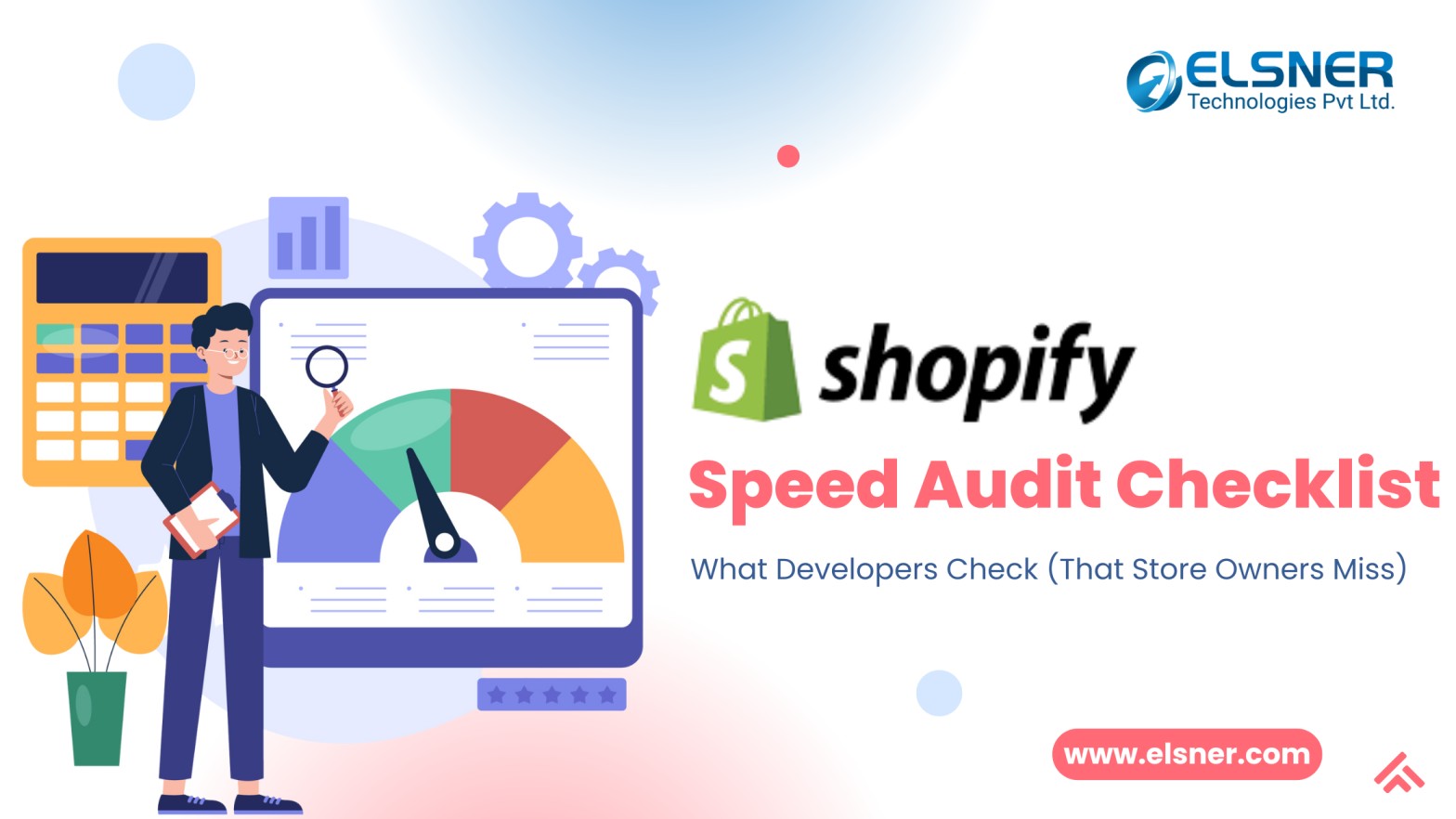- Why Shopify Store Speed Matters?
- Common Shopify Speed Issues That Make Your Store Slow
- Too Many Third-Party Apps
- Heavy or Unoptimized Themes
- Large Image and Media Files
- Unused Scripts and Liquid Code Issues
- No Proper Caching or CDN Setup
- Advanced Tips to Speed Up Shopify Store
- Optimize and Minify Theme Code
- Conduct a Shopify Site Speed Audit
- Limit Apps and Use Custom Development
- Enable Lazy Loading for Images and Videos
- Improve Mobile Performance on Shopify with AMP and Responsive Design
- Use a Content Delivery Network (CDN) for Faster Load Times
- Shopify Speed Optimization Tools and Resources
- Why Hire Experts for Shopify Store Speed Optimization?
- Conclusion
- FAQs
- How fast should a Shopify store actually load?
- Will removing apps break store functionality?
- How often should speed audits happen?
- Can non-technical store owners optimize speed?
- Does Shopify’s hosting affect store speed?
Every second counts in eCommerce. A slow Shopify store doesn’t just frustrate customers—it kills sales. Research indicates that a one-second delay results in a 7% decrease in conversions. That’s real money walking away because pages won’t load fast enough.
High bounce rates, cart abandonment, and lost revenue—these problems often stem from one primary cause: poor Shopify store performance. The math is brutal but simple. Faster sites make more money.
Good news? Fixing speed issues isn’t rocket science. With the right Shopify Development Services and proven speed optimization techniques, any store can become lightning-fast. This guide breaks down exactly how to speed up Shopify store performance without needing a computer science degree.
Let’s turn those slow-loading screens into quick, smooth shopping experiences that actually convert.
Why Shopify Store Speed Matters?
Speed isn’t just about impatient customers (though that’s important). It affects everything.
Google cares about speed. Their algorithm ranks faster sites higher. Core Web Vitals—fancy metrics measuring load time, interactivity, and visual stability—now directly impact search rankings. Slow site? Lower visibility. Simple as that.
Speed drives sales. Amazon discovered that every 100ms delay costs them 1% in revenue. For smaller stores, the impact hits even harder. Customers won’t wait around. They’ll find faster alternatives.
Mobile users are especially impatient. Over 70% of shoppers browse on phones. Mobile connections vary wildly. A heavy site on a shaky connection? That’s a recipe for abandoned carts. Anyone serious about sales needs to improve Shopify site speed on mobile devices first.
Here’s the reality: competitors are optimizing their sites. Speed gives an edge that’s hard to match with products alone.
Common Shopify Speed Issues That Make Your Store Slow
Most speed problems come from predictable sources.
Too Many Third-Party Apps
Apps are tempting. Need a countdown timer? There’s an app. Want product reviews? Another app. Email pop-ups? You guessed it.
Before long, stores run 15-20 apps simultaneously. Each app adds code. Every script takes time to load. The result? Common Shopify speed issues compound with each new installation.
The fix: Audit apps quarterly. Delete anything not actively driving revenue. Quality beats quantity every time for Shopify app optimization.
Heavy or Unoptimized Themes
Premium themes look gorgeous in demos. They come packed with features — parallax scrolling, animated sliders, complex mega-menus — all resource-hungry elements most stores never actually use.
A bloated theme can add 1–3 seconds to load time, which is an eternity online.
The fix: Choose lightweight themes and strip out unnecessary features. By applying smart Shopify Customization Techniques during theme optimization, you can keep only what customers actually need to shop successfully.
Large Image and Media Files
Product photos sell products. Everyone knows this. But a 5MB uncompressed image? That’s killing the experience before customers even see the product.
High-quality visuals matter. Unoptimized files don’t.
The fix: Compress everything. Convert to WebP format. Resize images to the actual display dimensions. These simple steps dramatically reduce Shopify load time without sacrificing visual quality.
Unused Scripts and Liquid Code Issues
Theme customizations pile up over time. Old apps leave scripts behind even after deletion. Inefficient code loops slow everything down.
It’s like digital hoarding. Every modification adds weight. Nothing gets removed.
The fix: Remove dead code. Optimize Liquid templates. This maintenance directly improves Shopify store performance.
No Proper Caching or CDN Setup
Without caching, servers rebuild every page from scratch for each visitor. That’s wildly inefficient.
Shopify includes basic CDN functionality. But proper configuration makes huge differences in delivery speeds, especially for international traffic.
The fix: Configure caching headers correctly. Leverage browser caching. Understand how to optimize Shopify store speed through smart infrastructure choices.
Advanced Tips to Speed Up Shopify Store
Time for actionable strategies. These best practices for Shopify performance deliver measurable improvements fast.
Optimize and Minify Theme Code
Clean code runs faster. Start with minification—removing unnecessary characters, whitespace, and comments from CSS and JavaScript files. File sizes shrink. Load times drop.Key actions:
- Combine multiple CSS files into one
- Remove unused CSS rules (tools like PurgeCSS help)
- Implement critical CSS for above-the-fold content
- Defer non-essential JavaScript loading
Shopify theme optimization gets technical here. But the payoff is worth it. Cleaner code means faster rendering across all devices.
Conduct a Shopify Site Speed Audit
Can’t fix what you don’t measure. Before making changes, establish baseline metrics. Know exactly where the site stands.
| Tool | What It Measures | Why It Matters |
| Google Lighthouse | Overall performance scores | Comprehensive analysis with specific fixes |
| GTmetrix | Waterfall charts, load sequences | Shows exactly which resources slow things down |
| Shopify Analyzer | Theme/app-specific issues | Shopify-focused recommendations |
| PageSpeed Insights | Mobile and desktop performance | Google’s perspective on speed |
Track these metrics:
- Time to First Byte (TTFB)
- First Contentful Paint (FCP)
- Largest Contentful Paint (LCP)
- Total Blocking Time (TBT)
A proper Shopify site speed audit reveals the exact bottlenecks. No guessing. Just data-driven improvements.
Limit Apps and Use Custom Development
Here’s where things get strategic. Apps offer quick solutions, while custom code offers better performance and improves Shopify site speed. The tradeoff? Custom development takes more effort up front.
Working with a Shopify Website Development Company makes sense for stores serious about speed. By implementing smart Shopify Strategies for Retail, you can create custom solutions that provide exactly what’s needed—nothing more, nothing less. No bloated code. No unused features.
Smart approach:
- Keep only essential apps
- Replace multiple apps with a single custom solution
- Audit app stack quarterly
- Measure the impact of each app on load time
Shopify app optimization isn’t about having zero apps. It’s about being selective and strategic.
Enable Lazy Loading for Images and Videos
Lazy loading defers off-screen content. Images only load when users scroll to them. This dramatically improves Shopify site speed by reducing initial payload.
Modern Shopify themes include native lazy loading. But it needs proper implementation across:
- Product photos
- Collection images
- Banner images
- Blog content
- Embedded videos
For videos, use thumbnail facades. Only load the full player when customers click play.
Improve Mobile Performance on Shopify with AMP and Responsive Design
Mobile optimization isn’t optional anymore. It’s essential.
Key tactics to improve mobile performance on Shopify:
- Implement responsive images adapted to screen sizes
- Reduce mobile-specific JavaScript
- Simplify mobile layouts (fewer elements = faster loading)
- Optimize touch targets for fingers, not mouse pointers
- Minimize intrusive pop-ups
Consider Accelerated Mobile Pages (AMP) for blog content and product pages. AMP strips down code to bare essentials. Results? Lightning-fast mobile experiences.
Test on actual devices. Browser simulators miss real-world issues that matter to customers.
Use a Content Delivery Network (CDN) for Faster Load Times
Shopify includes CDN functionality built in. Most merchants never optimize it properly.
CDNs store site content on servers worldwide. Customers download from the nearest location. Physics matters—shorter distances mean faster delivery.
Optimization steps:
- Ensure all assets load through CDN
- Configure appropriate cache headers
- Set up geographic routing for international customers
- Consider edge computing for dynamic content
For stores with global traffic, advanced CDN solutions offer serious speed advantages.
Shopify Speed Optimization Tools and Resources
The right tools make optimization manageable.
Performance Testing:
- Google Lighthouse (comprehensive audits)
- GTmetrix (detailed waterfall analysis)
- WebPageTest (multi-location testing)
- Chrome DevTools (real-time debugging)
Optimization Tools:
- TinyPNG or Squoosh (image compression)
- Webpack (JavaScript bundling)
- PurgeCSS (removing unused styles)
Monitoring Solutions:
- Shopify Analytics (traffic and speed correlations)
- Google Analytics (user behavior insights)
- Uptime monitoring services (availability tracking)
Professional developers use these tools continuously, not just once. New issues emerge as sites evolve. Ongoing monitoring catches problems before customers notice.
Why Hire Experts for Shopify Store Speed Optimization?
DIY optimization works for basic improvements, but advanced fixes require expertise.
Theme code modifications can break functionality, and app integrations often create unexpected conflicts. Server-side optimizations need careful implementation.
Professional developers understand Shopify architecture deeply. They know Liquid templating inside and out, and they’ve seen how various apps interact—and clash. Their experience often shapes real Shopify Growth Stories, showcasing how expert optimization transforms store performance and sales.
What experts provide:
- Identification of issues that automated tools miss
- Custom solutions maintain functionality while improving speed
- Prevention of optimization-related conversion problems
- Deep fixes for database queries and architectural limitations
When speed issues stem from complex technical problems, expert intervention becomes necessary. They can speed up Shopify store performance in ways standard guides can’t address.
Sometimes the fastest path forward involves bringing in people who’ve solved these problems hundreds of times before.
Conclusion
Shopify speed optimization never ends. It’s continuous improvement, not a one-time project.
Start with quick wins. Compress images today. Audit apps this week. Then tackle deeper optimizations over time. Whether implementing changes in-house or working with professionals, investing in Shopify store performance pays dividends immediately. Faster equals better. Always.
Need specialized help? When complex problems require expertise, hire Shopify developers who know how to optimize Shopify store speed and performance.
Don’t let slow loading times cost another sale.
FAQs
How fast should a Shopify store actually load?
Target under 3 seconds. Ideally, aim for 1-2 seconds. Mobile can stretch to 3-4 seconds for content-heavy pages, but faster always wins.
Will removing apps break store functionality?
Not if done carefully. Disable apps first. Test everything for 24-48 hours. If nothing breaks, then delete. This approach prevents nasty surprises.
How often should speed audits happen?
Run comprehensive audits quarterly. Do quick monthly checks after adding apps or changing themes. Speed degrades over time without regular monitoring.
Can non-technical store owners optimize speed?
Basic fixes require no coding. Image compression and app management are straightforward. Advanced Shopify theme optimization and custom code need developer expertise, though.
Does Shopify’s hosting affect store speed?
Shopify’s infrastructure is generally fast. Most speed problems come from themes, apps, and content—not hosting itself. But optimizing how Shopify features are used still matters enormously.

About Author
Dipak Patil - Delivery Head & Partner Manager
Dipak is known for his ability to seamlessly manage and deliver top-notch projects. With a strong emphasis on quality and customer satisfaction, he has built a reputation for fostering strong client relationships. His leadership and dedication have been instrumental in guiding teams towards success, ensuring timely and effective delivery of services.




